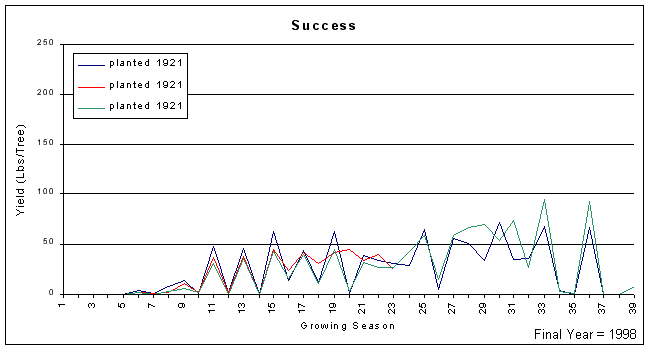Success
Average nut quality of test trees.
| # Nuts / lb. | % Kernel | Kernel quality breakdown | Specific gravity | ||
| % Fancy | % Standard | % Amber | |||
| 55 | 46% | 10% | 31% | 6% | .79 |
History
The original tree was planted by businessman W.B. Schmidt at his country home in Jackson County, Miss. in 1875. From this orchard was selected the 'Pabst' and 'Success' cultivars (Kenknight, 1970). At one time, 'Success' was one of the most popular of all cultivars. It has been used extensively in breeding and ten cultivars ('Desirable', 'Forkert', 'Barton', 'Choctaw', 'Comanche', 'Creek', 'GraTex', 'Mohawk', 'Oconee', and 'Pawnee') have been released with 'Success' parentage.
Comments
*Note: This is an older cultivar planted in the Old Variety Test at the Tifton Campus. Trees were planted decades ago when care was very different than it is now, and trees received much less care, so production data will reflect this fact. Trees began receiving insecticides in 1962, fungicides in 1970, nitrogen in 1962, and drip irrigation in 1975. The data for this cultivar was collected by several individuals, but the bulk of the data and the comments are from my predecessor Dr. Ray Worley. This information was originally published here: Worley and Mullinix, 1997.
The trees in this test were removed in 1959 to make way for a road and the cultivar was not impressive enough to plant in new plantings. It is extremely susceptible to the shuck decline complex and frequently overloads.
Production record of test trees beginning in year planted
'Success' production from the Old Variety Test. Each colored line represents the yearly production in pounds of nuts from an individual tree beginning the year planted.
Alternate Bearing Intensity* = 0.57
*Computed from mature trees using data from years after trees began receiving fertilizer and pesticide sprays.

